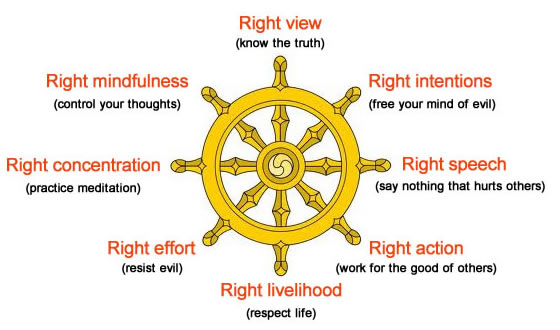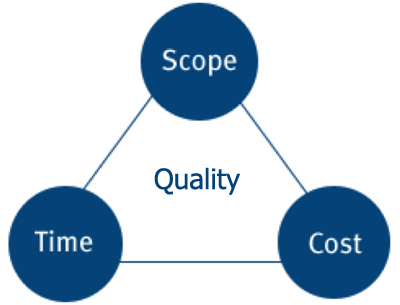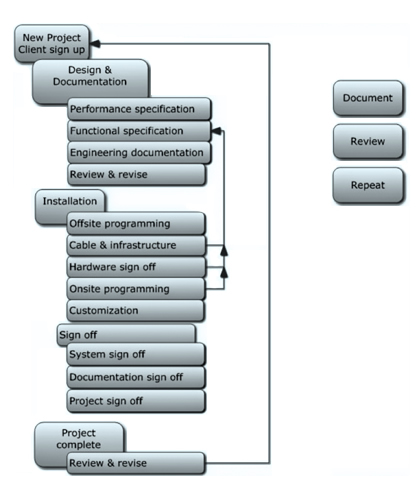 By Simon Buddle, SMC.
By Simon Buddle, SMC.
Whilst doing research for this article, I came across the words ‘the eightfold path’ on the Wiki page for Best Practice. Somewhere lost in the mists of time and my memory, a small box opened and the word ‘Buddhism’ yawned, dusted itself down and wandered into my consciousness. It’s a long way back down memory lane for sure, but I did enjoy learning about Buddhism at school. As described on Wikipedia, the eightfold path didn’t really add any value to the Best Practice page – my imagination had already moved on to monasteries in Tibet. Two mouse clicks later, and I’m no longer researching the words ‘best practice’.
The Noble Eightfold Path describes the way to the end of suffering, as laid out by Siddhartha Gautama. In a strange way, that sentence gave me more of an insight into best practice than anything I’d seen on the Wiki page.

I work for a company that is ISO9001 accredited – we have been for many years. I was there before ISO, went through the pain of implementing it and now we, as a company, reap the benefits of that accreditation. It helped us to put an end to the pain and suffering of never being quite sure if we could deliver the project on time and on budget.
Project Manager’s Triangle
Best practice is a broad and slippery term, easily corrupted and lacking any real definition. For the purposes of our definition, let us use the phrase and apply it to a project or, more accurately, the project process. Broadly speaking, we can break a project down in to two elements: office/administrative and onsite/engineering. The first important hurdle to overcome is to understand that a project requires a process that is repeatable, able to be modified and profitable.
The process and detail of how your company runs projects will vary from one to another, but there are a number of criteria that are fundamental:
1) Scope.
2) Time.
3) Cost.
These three factors are also known as the ‘Project Manager’s Triangle’, and have an impact on the quality of the project we deliver.

Scope
Scope requires that we have a clear brief from the client which we can replay back to them through specification documents. They also provide us with a check at time of project completion to agree that the work has been carried out in accordance with the original brief.
Time
Understanding the time it takes to deliver a project before you start naturally has a positive impact on the quality of work and your profitability. Documentation takes time to produce, therefore price for it.
Do you have a labour calculator or a simple ready reckoner for installation of devices? Ask the engineers how long it really takes to fit a particular piece of equipment. For example, some people would argue that fitting a PIR in the ceiling is a five-minute job. And they are right – once you are standing on the ladder with the right sized hole cut out, correct tools in hand and no obstructions in the ceiling. But have you factored in getting the ladders (or scaffold tower) to the room, protecting the floor, bringing the stock from the vehicle, cutting out the ceiling hangers/metal carriers, or waiting for another trade to come along to do it?
The risk is that we try to do too much for too little, meaning the quality of our work will drop to maintain profit, or the profitability will drop to maintain quality. Neither are sustainable business models.
Costs
There are costs associated with delivering any project; direct costs such as the kit and the labour, drawings and documents and travel or parking. Indirect costs also come in to play too: your company insurance, stores staff, training and so on. Any business owner worth their salt will know how much it costs to run the business and therefore how much work needs to be done in order to turn a profit.
Documentation
As your business grows, it becomes more and more critical that you review projects on completion so you can revise and improve your project process. At the heart of all of this, is the basic requirement for documentation. If we can commit the information to paper, we are two thirds of the way to a successful project, and successful businesses are built on multiple successful projects. Document, review, revise and repeat. Each time we go through the project process we improve how we do it.

Conclusion
Whilst getting in to the habit of creating documentation and business processes can be painful, the fruits are there for all to see. Once you have a successful project process, refining it, repeating it and making it more profitable becomes easy. To quote Einstein “Insanity is doing the same thing over and over again and expecting different results.” Does it therefore follow that to do the same thing over and over again and expect the same result is sanity? One thing is for sure – it will be the basis for a solid, profitable business.
Simon Buddle is the Technical Director of SMC – systems integration consultants and installers. Simon is also a regular contributor to KNXtoday.













